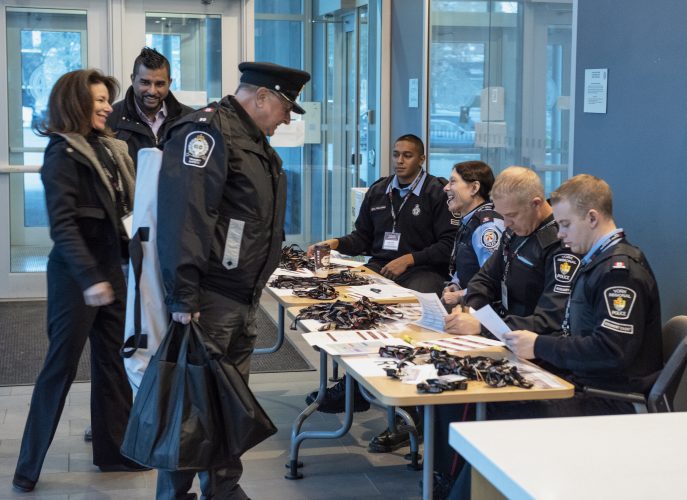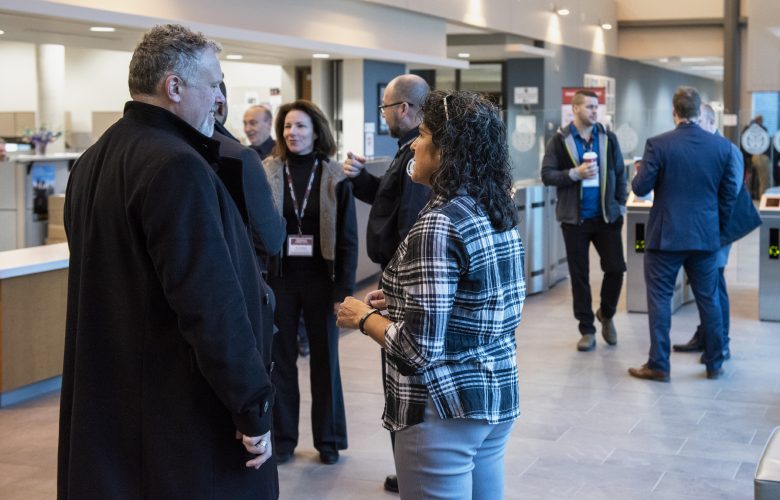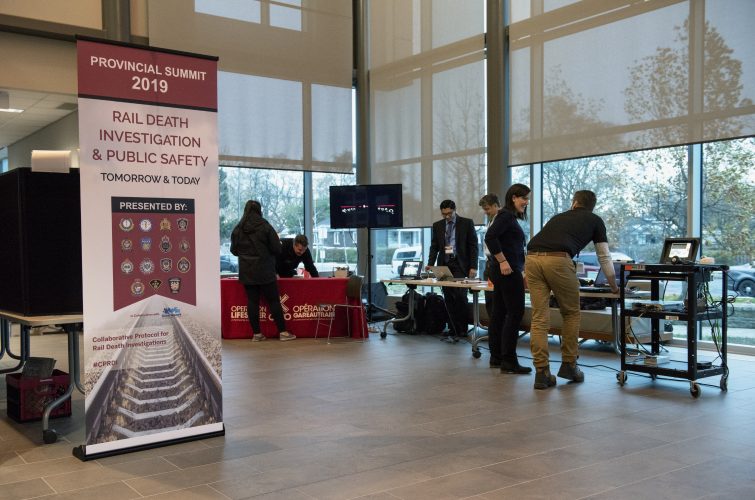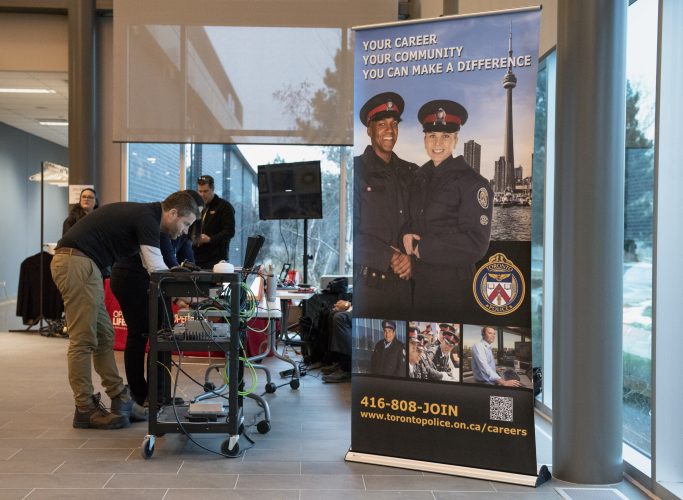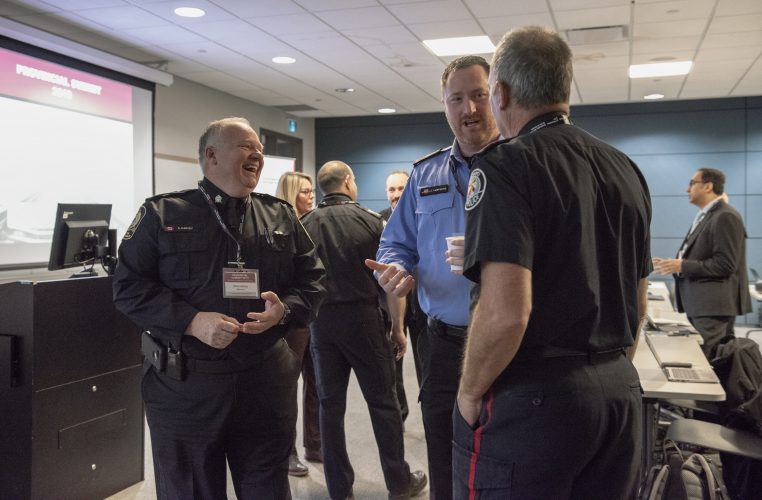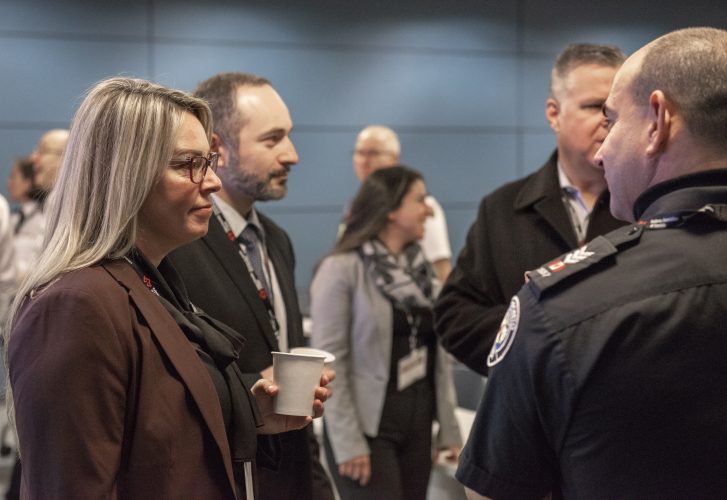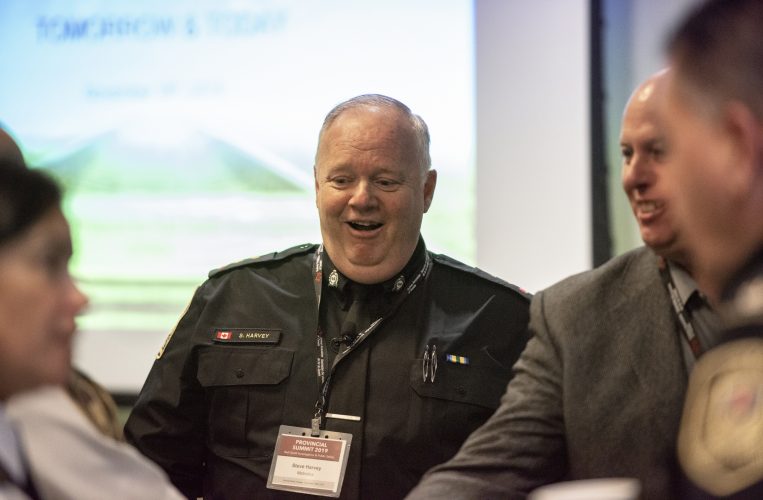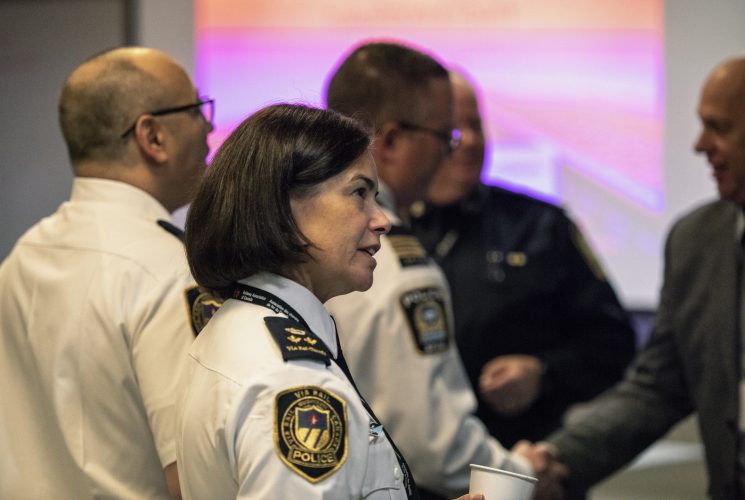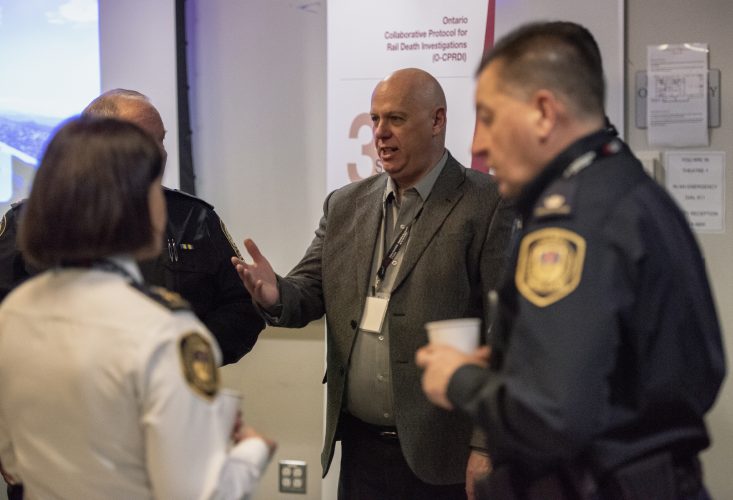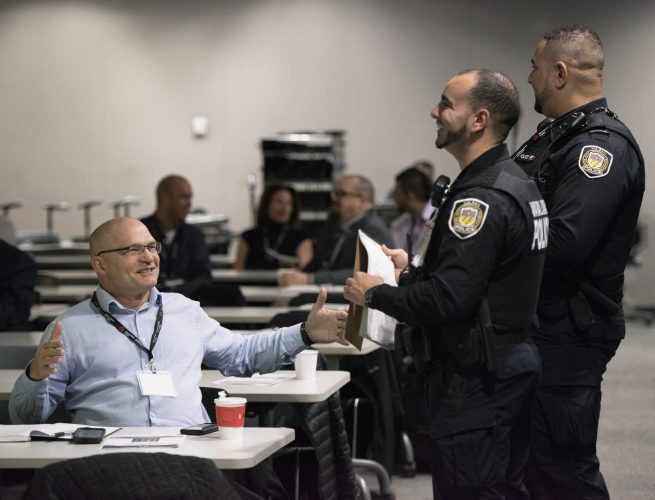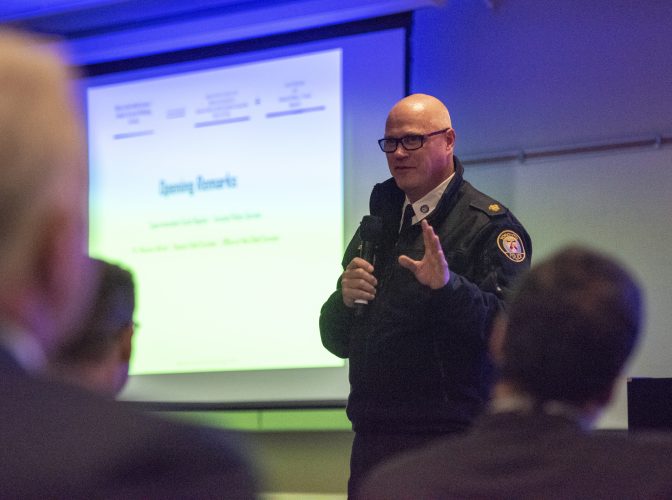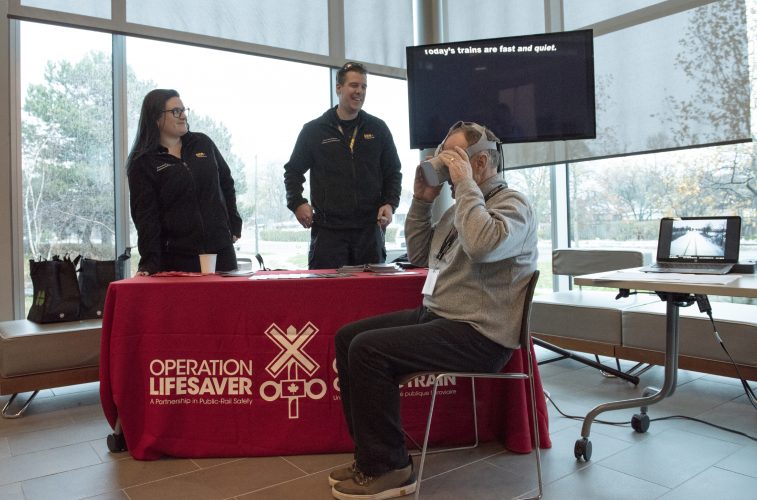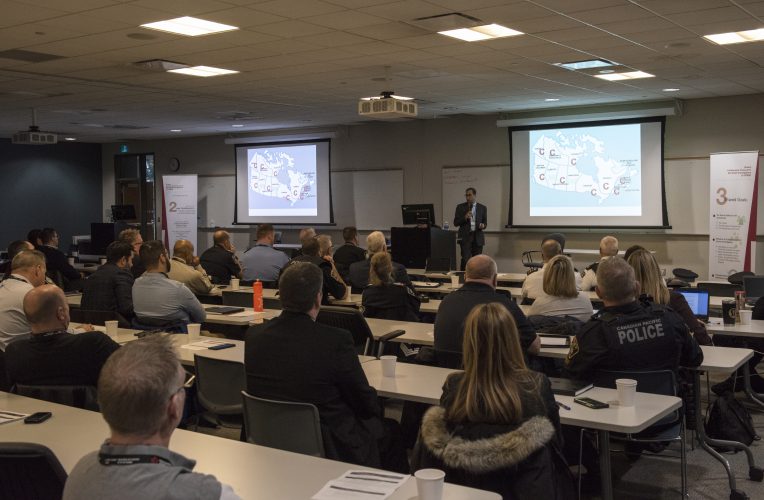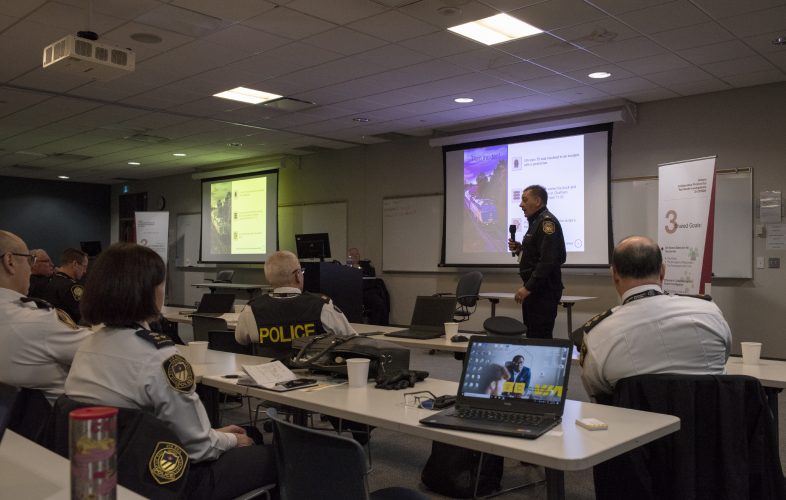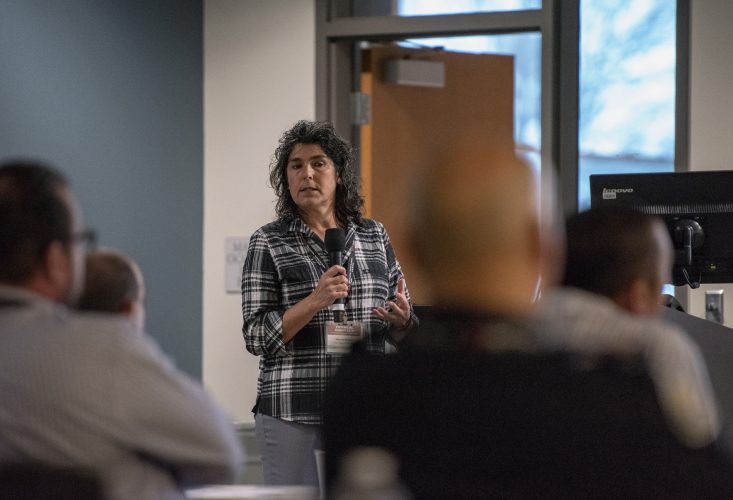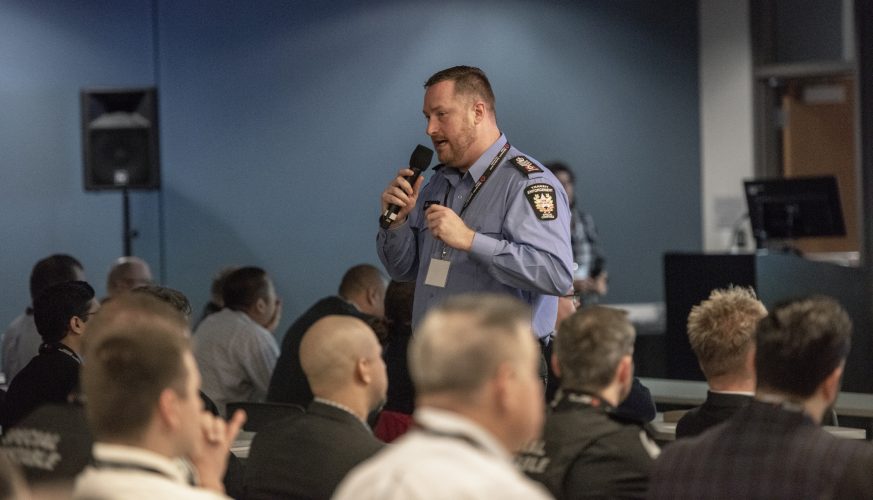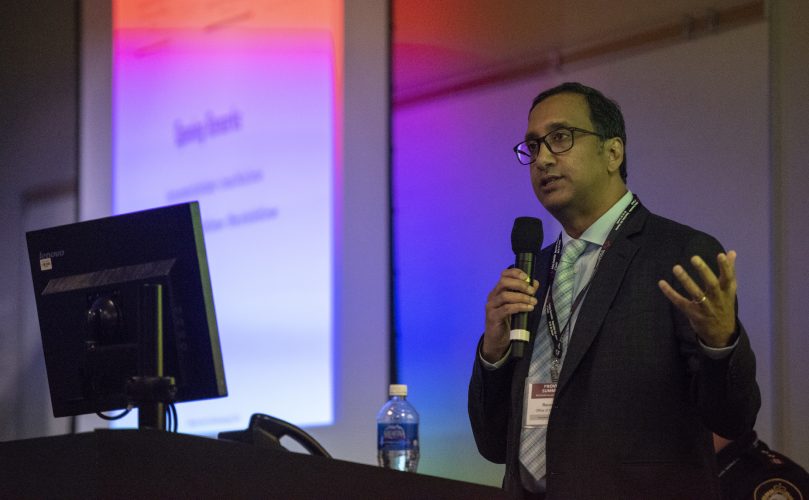
News
Photo Gallery
Rail Death Investigations Summit rolls out collaborative protocol
December 5, 2019 By Staff
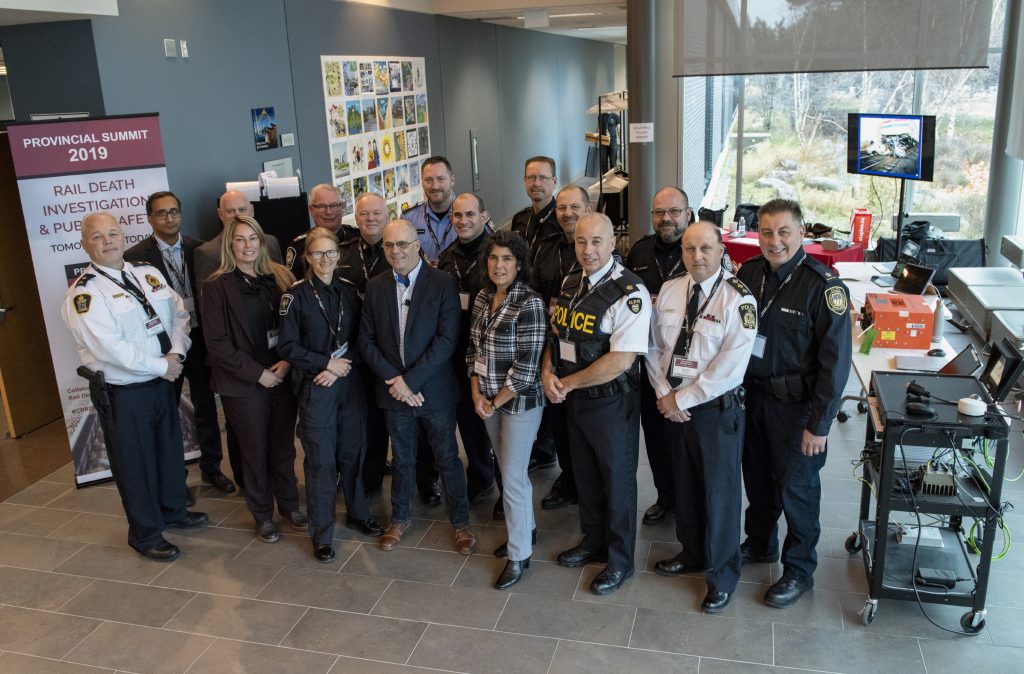 The working group behind the new Collaborative Rail Death Investigation Protocol presented case studies and more during the first Rail Death Investigations & Public Safety Summit.
First row, left to right: Scott McCallum – CN Police, Jessica Hay – York Regional Police, Sheryl Sutton – South Simcoe Police, Norm Taylor – Global Community Safety, Maxine Bairos – York Regional Police, Paul Bedard – OPP, Bill Law CP Police, Dan Delaney – VIA Rail Police.
Second row: Dr. Reuven Jhirad – Office of the Chief Coroner, James Babe – OC Transpo, Dave Durant – Metrolinx, Steve Harvey – Metrolinx, Jay Lawrence – TTC, Warren Stein – Toronto Police Service, Randy Cowan – Metrolinx, Gary Carty – Peel Police, Murray Campbell – Toronto Police Service.
Photo: Brian Main, Metrolinx
The working group behind the new Collaborative Rail Death Investigation Protocol presented case studies and more during the first Rail Death Investigations & Public Safety Summit.
First row, left to right: Scott McCallum – CN Police, Jessica Hay – York Regional Police, Sheryl Sutton – South Simcoe Police, Norm Taylor – Global Community Safety, Maxine Bairos – York Regional Police, Paul Bedard – OPP, Bill Law CP Police, Dan Delaney – VIA Rail Police.
Second row: Dr. Reuven Jhirad – Office of the Chief Coroner, James Babe – OC Transpo, Dave Durant – Metrolinx, Steve Harvey – Metrolinx, Jay Lawrence – TTC, Warren Stein – Toronto Police Service, Randy Cowan – Metrolinx, Gary Carty – Peel Police, Murray Campbell – Toronto Police Service.
Photo: Brian Main, Metrolinx About 135 members from police and public safety agencies across Ontario gathered recently at the Toronto Police College to examine and discuss the new Collaborative Protocol for Rail Death Investigations (CPRDI), launched in May 2019, at what marked the first Rail Death Investigations & Public Safety Summit.
It was an opportunity for participants to learn how the working group developed the protocol over the past two years, said Steve Harvey, one of the organizers of the event and an inspector with Metrolinx.
“There was a working group of 15 different agencies, a combination of transit and police, transportation and the coroner’s office,” he said. “The protocol has now been adopted through the Ontario Association of Chiefs of Police and this summit is all part of rolling it out.”
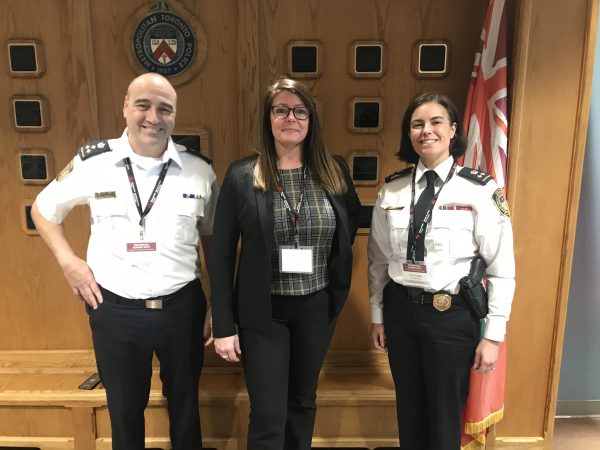
From left to right: VIA Rail Canada Police Chief Const. Peter Lambrinakos, Tanis Peterson of the Railway Assocation of Canada, and VIA Rail Police Deputy Chief Lucie Tremblay were among the attendees at the summit in Toronto.
Photo: R. Francoeur
Non-suspicious deaths occur with alarming frequency on freight and passenger railway, mass transit, light rail and subway lines across Canada. This is a single, uniform and reliable protocol to guide the on-scene response and early investigative requirements associated with all categories of railway deaths. It details a system in which all partners on scene can work collaboratively to see the safe and efficient restoration of operations to the transportation systems in about 90 minutes.
“The protocol is not to say the whole investigation is over in 90 minutes,” noted Norman Taylor, president of Global Network for Community Safety and a key member of the working group. “The goal is the interruption is over at 90 minutes. It’s about accelerating the decision point.”
Aside from the delays in the transportation system, there is the potential for additional community safety concerns, Harvey noted. The effects of having a lengthier than necessary investigation can cascade across numerous communities farther away from the incident site. That can result in blocked crossings, traffic and crowding issues and trains trapped in potentially isolated areas, he explained.
The summit also heard case studies from the Ontario Provincial Police, Peel Regional Police, VIA Rail Police, CN Police, the Toronto Transit Commission and others to help understand how to best work together. Dr. Reuven Jhirad, the deputy chief coroner, presented on the coroner’s perspective and needs as well.
All participants received a CPRDI Agency Champions briefing package, a slide deck developed by the Working Group to help take back key information on the protocol to their respective agencies.
“This is the beginning, the building blocks,” Harvey said. “It’s part of changing the culture in policing and the way we do things. Culture takes a while to change but it’s not impossible — there’s lots of work ahead.”
The working group will reconvene in early 2020, he added, to develop a strategic plan and identify further training opportunities and aids.
See all the photos, shot by Brian Main of Metrolinx, below:
Print this page
